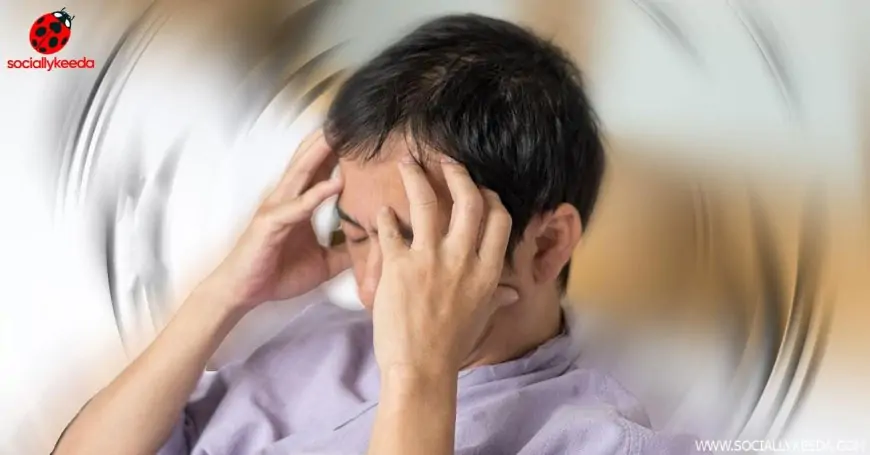What is vertigo?
Vertigo is a version of dizziness in which the world seems to falsely be in motion or to spin. It may make you feel as though you yourself are spinning around or the world around is you spinning. Even simple movements can trigger vertigo easily and can make going about your regular life very hard. Hence, it is very important to get the right kind of vertigo treatment.
This happens due to your brain either receiving conflicting signals or misinterpreting them and telling your body that it is in motion even when it is not. Vertigo is often a symptom of an underlying ailment and not a diagnosis of its own. Although it is similar to other forms of dizziness, it is distinct from them.
What are the types of vertigo?
Vertigo is mainly found in the elderly but it can affect anyone at any age. There are mainly two different kinds of vertigo: central and peripheral.
Peripheral vertigo is the most common kind of vertigo. It is caused by a number of diseases such as:
Benign paroxysmal positional vertigo is the most common cause of dizziness that comes from lying down. It occurs when tiny calcium crystals known as canaliths are dislodged from their original position and collect in the inner ear. It may occur due to an ear injury.
Meniere's disease is a disorder caused by the changing pressure and build-up of fluid within the ear. It is responsible not only for vertigo but also for other ailments like tinnitus and hearing loss. Vestibular neuritis or labyrinthitis is related to infections which cause inflammation around the inner ear. It comes on suddenly and may last for two to three weeks.
Perilymph fistula may occur due to sudden pressure changes like scuba diving or a head injury. Superior semicircular canal dehiscence syndrome is caused by the breakdown of the canal that carries fluids within the ear.
Central vertigo is less common and is caused by diseases or injuries to the brain. Multiple sclerosis, tumours, and migraines can all be causes of central vertigo. Cases of central vertigo last much longer than peripheral vertigo. The episodes can be much more intense and you may find yourself unable to move without help.
It is important to find out what kind of vertigo you have so that it may be treated accordingly.
What are the symptoms of vertigo?
It is easy to identify the main symptom of vertigo, we must have all felt it at one time or the other when spinning around much too fast in games as children or when we have just stepped foot off a rollercoaster. The sensation of dizziness and movement that continues long after we have stopped moving is known as vertigo.
Although the sensation of movement is the main symptom of vertigo, it may be accompanied by many other symptoms. They will depend on the underlying cause of your vertigo and what type of vertigo you have. You may also experience nausea, headaches, abnormal eye movements, sweating and ringing in the ears.
It can occur due to over 40 different diseases of the inner ear, the nervous system or the brain but the most common reason for vertigo tends to be problems with the inner ear sensors. The inner ear sensors send signals to the brain about movements of the body relative to gravity which helps keep your balance. Any disruption in the working of the inner ear can result in vertigo.
Vertigo may also be associated with head injuries, strokes or tumors, medications that damage the ear and migraines.
What are vertigo treatments?
In some cases, vertigo may be resolved on its own. This is because the brain is able to adapt to whatever is causing vertigo and can rely on other functions to maintain proper balance. However, if the cause is serious and vertigo is left unchecked, it may last for days or even for years and significantly alter a person’s ability to go about their daily life. The treatment will depend on the kind of vertigo you have and its underlying cause.
Sometimes, even though vertigo may clear up on its own, you may not be able to afford to spend that much time in recovery. In such cases once again, approaching a doctor for vertigo treatment may be beneficial.
In many cases, you may simply undergo physical therapy that will help you become tolerant to vertigo which will help you get through your episodes quickly and much more easily.
Vestibular rehabilitation is a kind of physical therapy meant to strengthen the vestibular system which sends signals to the brain about the movements of the head and body relative to gravity. It is generally recommended in cases of recurring vertigo as it trains the brain to rely on other mechanisms to compensate.
In canalith repositioning manoeuvres, the treatment involves a doctor moving the head and the body in ways that move the calcium deposits out of the ear canal and into the inner ear so that they may be absorbed by the body. It is meant specifically for BPPV. You can learn to perform the exercises on your own for any attacks you may have outside of the doctor’s office as well as purchase tools to help you perform these exercises.
In some cases, medication may be prescribed as vertigo treatment so that they may alleviate the symptoms. Motion sickness, nausea and the infections causing vertigo in the first place may be alleviated through medication such as antibiotics, antihistamines and so on.
In some very serious cases, surgery may be required to treat vertigo. This occurs when the patient is diagnosed with tumors, neck or brain injury and so on.
Whatever the cause and whatever the treatment, it is imperative that you seek the help and treatment that you need and deserve for your ailment so you may return to your regular life as quickly and with as little discomfort as possible.




![[WATCH VIDEO] Sophie Rain and sister Sierra Rain as Black Spiderman goes viral [WATCH VIDEO] Sophie Rain and sister Sierra Rain as Black Spiderman goes viral](https://www.sociallykeeda.com/uploads/images/202403/image_140x98_660976c59cce0.webp)





![[FULL WATCH VIDEO] Will Levis And Gia Duddy Leak Video Viral On Social Media [FULL WATCH VIDEO] Will Levis And Gia Duddy Leak Video Viral On Social Media](https://www.sociallykeeda.com/uploads/images/202405/image_140x98_6651e7ae8038d.webp)


